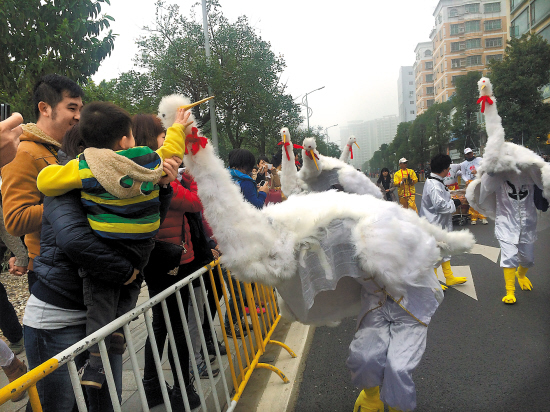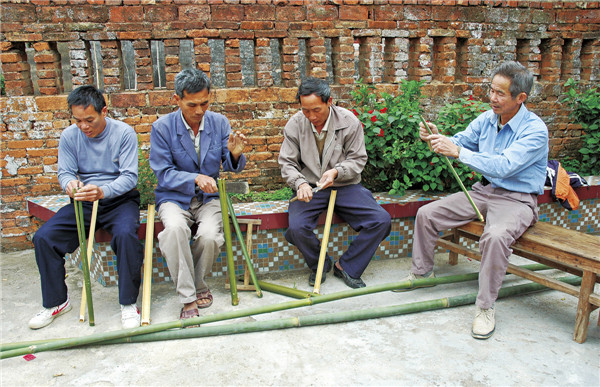Sanzao Crane Dance
Situated on the coast of the South China Sea, Sanzao town of Doumen district in Zhuhai boasts a fertile environment and therefore is hailed as a Land of Plenty, including a multitude of cranes. And so the natives would sing and dance as though they themselves were cranes, the stalk-legged and long-necked bird held dear as a symbol of sanctity and longevity.

Doumen's Sanzao Crane Dance can be traced back 700 years to the Song Dynasty (AD 420-479). Mainly practiced in Zhongxin and Haicheng villages, Sanzao people accepted that it was natural to symbolize wishes of immortality by donning crane costumes prior to paying Lunar New Year visits to each door in the vicinity.
Villagers voice crane songs and promenade in public from the first to the seventh day of each Lunar New Year. They anticipate the moment, on New Year's Eve, when a venerable elder dots the eyes of the crane with a new writing brush, thereby inaugurating the dance. On the seventh day of celebrations, which is considered the birthday of human beings, villagers hold a ritual ceremony: one sings a crane song while others beat on drums, gongs and cymbals. The performing team blesses those who have reached the age of 30 and delivers to their doors hearty congratulations to those aged 60 and above.




 Print
Print Mail
Mail

